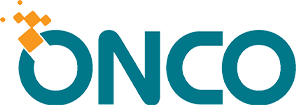Navigating multiple patients with different cancer types in different phases of care along the continuum can be difficult and overwhelming. For example, three patients could have a biopsy with pending results. Another two patients may be coming back to start chemotherapy, and yet another is in post-op recovery. It can be easy to lose track of patients if the system is not organized. This can be a significant challenge, so many navigators use a combination of tools including:
- Multiple electronic health records (EHR)
- Excel spreadsheets
- Outlook calendars
- Desk calendars
- Sticky notes
- Paper files
Additionally, multi-facility systems with multiple navigators can be quite diverse in how patients are navigated. With different providers, diverse treatment regimens, and unique communities, imagine all the variations in navigation workflows that can exist. Each navigator may have a unique set of touchpoints when they contact and educate patients. Attempting to standardize these workflows with disease or treatment specific pathways and touchpoints can be a cumbersome and daunting task. OncoNav can make this process easier and more straightforward.
Navigator Pathways
OncoNav supports standardization of navigation workflows and touchpoints with task templates that are based on cancer diagnosis and treatment pathways. Each template is created with the navigation program to support their unique navigation processes and can contain multiple patient encounter tasks and educational documents to help manage expected follow-ups and touchpoints. Once created, the templates are available to all navigators in your program to better standardize navigator workflows and processes and to ensure that patients do not fall through the cracks.

This is an example of a pathway for a breast cancer patient going to medical oncology for chemotherapy. The navigator may attend the initial treatment consult with the patient, reinforce treatment education, and follow up with the patient before and/or after chemo treatments. Pathway based templates can help to standardize the navigation program, so regardless of who is navigating the patient or where the patient is receiving treatment, the minimal touchpoints by the navigator will be the same.
Workflow Organization
To stay on track of those patient follow-ups, OncoNav includes patient and navigator calendars. While the patient calendar displays tasks and appointments specific to that patient, the navigator calendar displays all patient-specific tasks that are assigned to that navigator, as well as any additional navigator-specific tasks. Upcoming or overdue tasks for the navigator will display in a pop-up window that alerts the navigator to that patient phone call, inpatient visit, or new patient that was assigned and handed off by the scheduler.
In the patient’s calendar, patient tasks can be assigned by the navigator or populated from appointments that were scheduled in the EHR. All the tasks that were included in the breast cancer patient’s medical oncology template would show here in the calendar or by looking at the Grid View which provides a worklist of tasks for the patient. Tasks can be color coded to provide standardization of the navigation program’s workflows and allow for a quick visual of how the navigator will be spending their day. The task in the patient’s calendar will also display in the calendar of the navigator assigned to it.

This is a ‘Week in the Life’ of the navigator as it contains all the work the navigator has scheduled themselves to complete for the week. It will show all the tasks for all the navigator’s patients, as well as any tasks or meetings added by the navigator to account for time spent on administrative tasks. By documenting and completing each of the tasks, the navigator can account for their time transparently. Reports can then display patient volumes, time spent on patient tasks, and the number of encounters completed during a specific time frame by the navigator.
For seamless handoffs and coverage for extended absences, other navigator calendars can be viewed side by side with this navigator. A navigator who expects to be out for an extended absence may provide a full handoff of their patients using spreadsheets that would list the patients and all the background info, including diagnosis and treatments, and next steps or follow-up dates with why the navigator needs to follow up with the patient. If a navigator is out unexpectedly, it may be more difficult to assist those patients without knowing what needs to be done for them which can lead to patients falling through the cracks. In OncoNav, the navigator’s calendar easily provides much of that information. Each task displays the patient’s name and the task assigned for that day which provides an overview of what this call or visit may be concerning. Navigators can also write notes within the task for additional information when scheduling the task and after the task is complete.
Thank you for taking the time to read more about standardizing navigation workflows and processes with OncoNav templates, tasks, and calendars. Organization and consistency are key to any navigator program, and we want to make sure it’s easy for every navigation program. If you would like more information on how to set up or use templates in OncoNav, please contact OncoNav support at (888) 369-1791 or support@onco-nav.com. If you’re not a current client and would like to see a demo, please email us at sales@oncolog.com or click the link Schedule a Demo from the Onco website.


